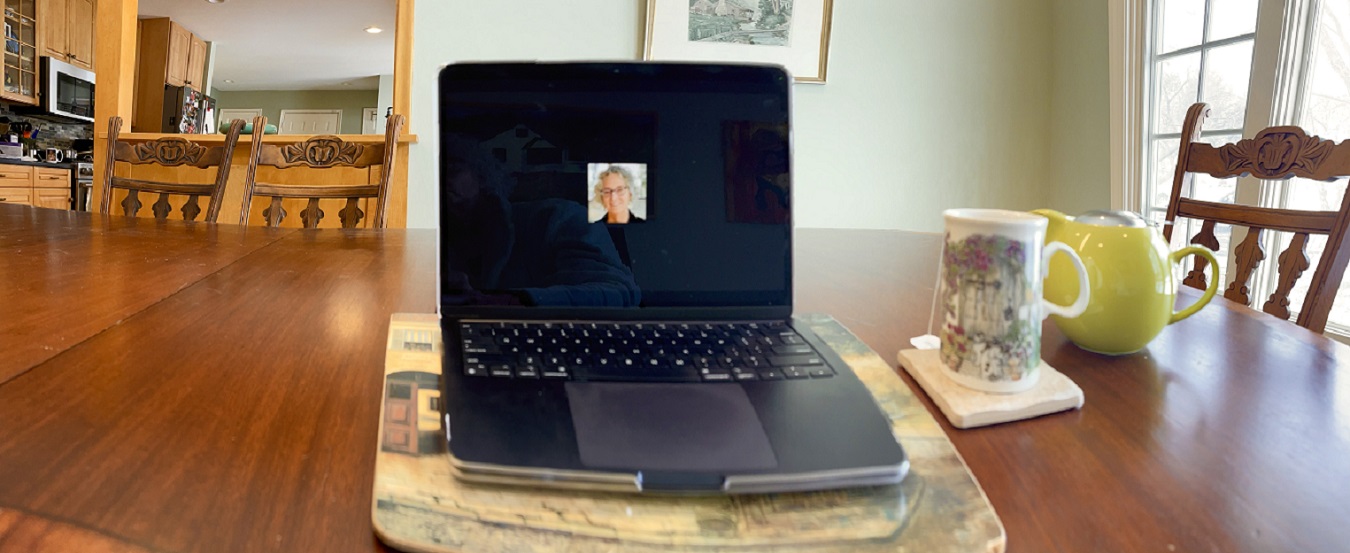Preferential shift: Some people opt for Teletherapy over clinic-based sessions
During the COVID pandemic new efforts evolved for reaching people and continuing care in psychotherapy. During that time it was an accomodation. However we now have years of solid research revealing that connection through video calls is a highly effective modality of practice. There are benefits for the client that outweigh disadvantages of not meeting in person. It was a real adjustment to not share a private space for a private conversation yet connection prevails and people heal. However, for the client, it can be a transformative experience to be in the privacy of one’s own environment for a confidential conversation.
Further, teletherapy is practical with reduced travel time and flexible scheduling that makes a big difference for busy clients. Often, towards the end of the day, its just nicer to be able to go directly home from work without adding more driving time to a therapist’s office. Therapy from home is especially convenient for couples for this reduction in commuting time and being together in a familiar space.
 Peer reviewed research
Peer reviewed research
I have worked in-person for 35 years prior to COVID restrictions causing the relocation of my office space from in-person to online. Initially, it was a response to personal and public health, and we didn’t have the research to compare the efficacy of the two modalities. In the last couple of years, that’s changed.
Recent research tells us that establishing connection and trust in the therapeutic relationship through teletherapy is increased by the therapist having experience in an in-person setting during training and practice (Lin, T., Heckman, T. G., & Anderson, T. (2022). The efficacy of synchronous teletherapy versus in-person therapy: A meta-analysis of randomized clinical trials. Clinical Psychology: Science and Practice, 29(2), 167–178).
Please see the two peer-reviewed scholarly articles at the bottom of the page for further understanding of the benefits of teletherapy and how it compares favorably to in-person mental health treatment.
How it Works
When I have a session – Zoom performs as the best platform for a secure and confidential connection. I typically send an link for an appointment a few minutes prior to the appointment time, directly to a client’s email. A reliable WiFi connection is helpful during a remote session.
Begin a Teletherapy Journey
Whether its your first time or you’re familiar with the process – we can likely connect and discover together what your path to healing will look like going forward. I am lucky to have decades of experience working in this field and am still helping people like yourself reach a more joyful place in life.
Research:
The efficacy of synchronous teletherapy versus in-person therapy. A meta-analysis of randomized clinical trials.
Citation
Lin, T., Heckman, T. G., & Anderson, T. (2022). The efficacy of synchronous teletherapy versus in-person therapy: A meta-analysis of randomized clinical trials. Clinical Psychology: Science and Practice, 29(2), 167–178. https://doi.org/10.1037/cps0000056
Abstract
Despite the increasing use of teletherapy, it remains unclear if client outcomes differ between remote and in-person settings and, if they do differ, what factors might contribute to these differences. The current study synthesized findings on the comparison between teletherapy and in-person therapy using a meta-analytic approach. All known RCTs comparing teletherapy (telephone and videoconferencing therapy) to in-person therapy were identified via bibliographic database search (PsycINFO, Medline, and Cochrane database), manual searches of previously published meta-analyses, and expert contact. We identified 1,393 studies in the initial search, 20 of which satisfied study inclusion criteria. No significant difference was found between teletherapy and in-person therapy in treatment outcomes at posttreatment (g = −0.043) or follow-up (g = −0.045) or in attrition rates (RR = 1.006). Trainee therapists experienced greater client attrition rates in teletherapy than did licensed therapists. Videoconferencing therapy was at greater risk for client attrition than telephone therapy. Within-group findings showed that teletherapy produced a symptom reduction of a large magnitude at posttreatment (g = 1.026) and follow-up (g = 1.021). These findings provide empirical support for the practice of teletherapy and that client outcomes in teletherapy do not differ from in-person versions of treatments.
(PsycInfo Database Record (c) 2022 APA, all rights reserved)
In Teletherapy we trust – Now what? Three questions for mental health stakeholders.
Citation
McCord, C. E., Tarlow, K. R., & Terrebonne, T. M. G. (2022). In teletherapy we trust—Now what? Three questions for mental health care stakeholders. Clinical Psychology: Science and Practice, 29(2), 179–181. https://doi.org/10.1037/cps0000070
Abstract
Comments on an article by Tao Lin et al. (see record 2022-17335-001). Does teletherapy work, and does it work as well as in-person therapy? These questions have been critically important to mental health care stakeholders, including patients, providers, managed care organizations, researchers, and policy makers. Despite persistent doubts among some professionals that teletherapy is as effective as in-person therapy, the meta-analysis conducted by Lin et al. found video teletherapy clients had similar short- and long term outcomes compared to in-person therapy; importantly, they also found that telephone teletherapy (audio only) may be a reliable and efficacious alternative to video teletherapy for those without access to required technology or high-speed Internet. The meta-analysis adds to the growing body of evidence that confirms teletherapy does work, and for many it works as well as in-person therapy. With this assurance, stakeholders in mental health care have many more questions to answer as we welcome a new era of care. This commentary presents three questions—about equity, capacity, and competency—for stakeholders to consider next. Lin et al. found that trainee therapists had higher client attrition rates during teletherapy than during in-person therapy, which may be due in part to challenges in establishing sufficient engagement and strong therapeutic alliance in teletherapy. That licensed clinicians had similar rates of client attrition in teletherapy and in-person therapy confirms it is quite possible to deliver acceptable care virtually—but that the “learning curve” for trainees may be steeper for treatments delivered remotely via technology. This finding raises meaningful questions about how to best train new generations of mental health professionals in providing effective mental health care via telehealth. Those concerned about the efficacy of teletherapy and its equivalence to traditional in-person therapy should be reassured by Lin and colleagues’ meta-analysis, which confirms that video and telephone teletherapy are effective and accessible alternatives to in-person treatment.
(PsycInfo Database Record (c) 2022 APA, all rights reserved)

